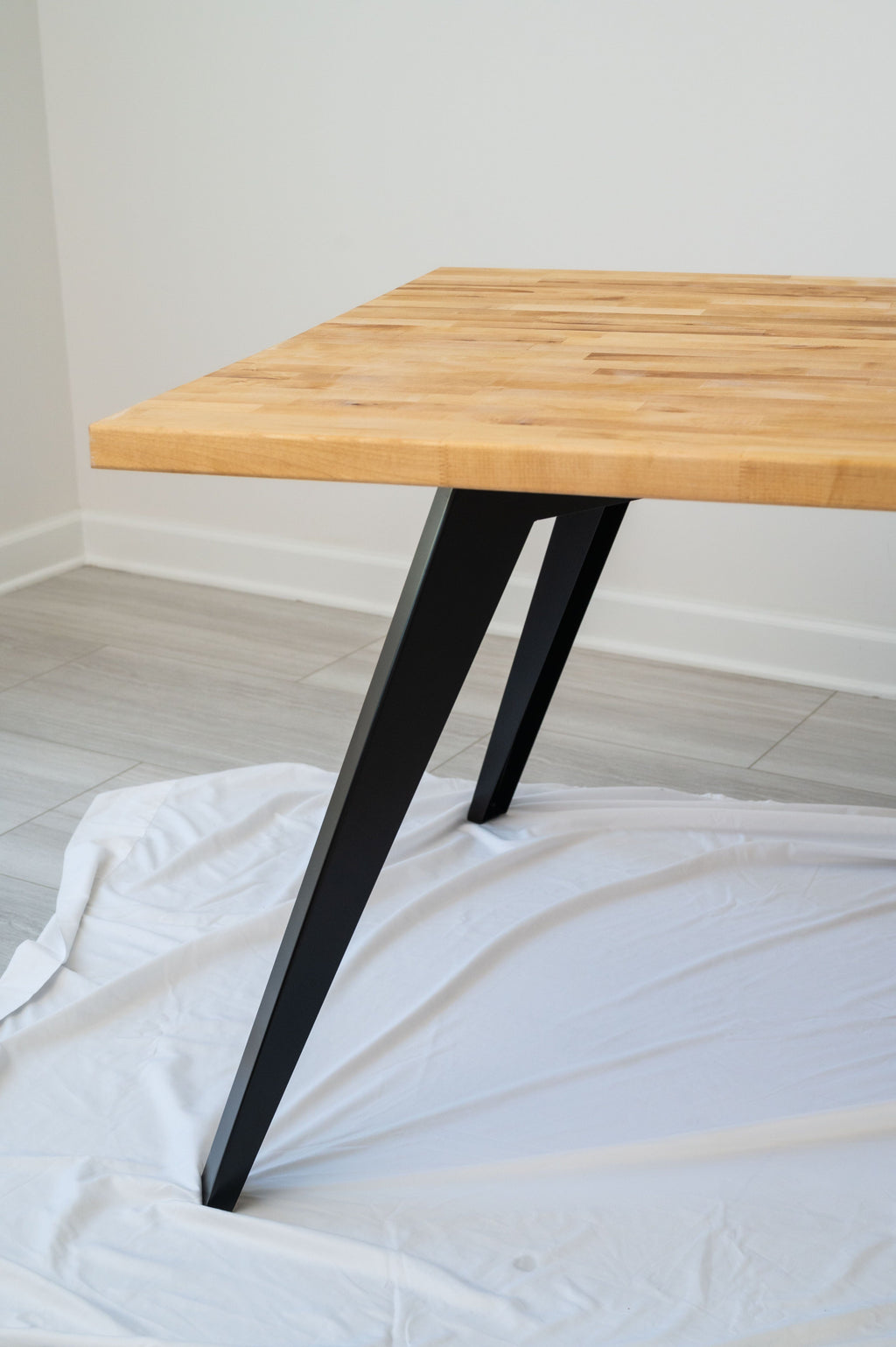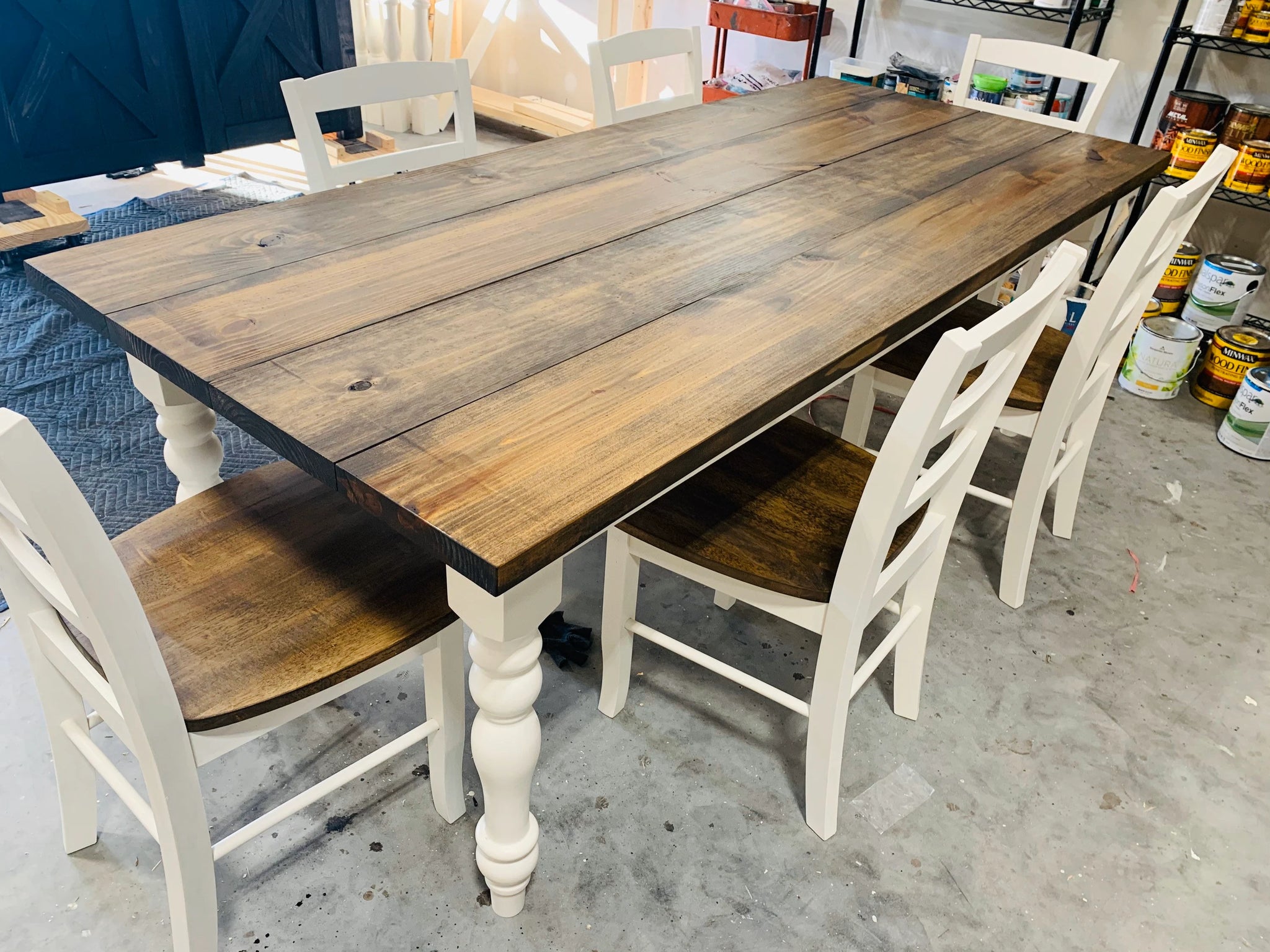Essential Factors To Consider for Choosing the Right Dining Table Legs Timber
Choosing the proper timber for eating table legs entails a nuanced understanding of numerous aspects that affect both performance and aesthetic charm. The choice of wood type, varying from durable woods to much more delicate softwoods, plays a critical role in ensuring durability and security. Each of these components can substantially influence the general experience of your dining space.
Importance of Timber Type

Hardwoods, such as maple, oak, and walnut, are often preferred for their toughness and resistance to put on. These kinds of timber offer a robust foundation that can hold up against day-to-day usage, making them suitable for dining tables that experience frequent celebrations. On the other hand, softer timbers like pine might be extra prone to damages and scrapes, which might not be optimal for high-traffic locations.
Additionally, the option of wood can also influence the convenience of maintenance. Some woods call for routine oiling or sealing to maintain their appearance, while others might be extra forgiving. Ultimately, picking the suitable wood kind involves stabilizing aesthetic considerations with functional requirements, ensuring that the eating table legs not only look enticing however also stand the examination of time.
Evaluating Security and Stamina
When reviewing table legs, one must take into consideration the stability and toughness they provide to the total structure. The legs are essential in supporting the table top and ensuring the eating experience is safe and satisfying. A secure table is vital for protecting against tipping or tottering, which can lead to spills or mishaps throughout meals.
The option of timber type substantially influences strength. Woods such as walnut, oak, and maple are generally extra robust and resilient than softwoods like yearn or fir. Furthermore, the density and design of the legs play an essential function; thicker legs or those with a conical design can use much better support and stability.

Visual Considerations
While performance is vital, the visual appeal of dining table legs can not be ignored, as they significantly influence the general layout and setting of the dining space. The selection of style, coating, and timber can boost or take away from the table's visual impact.

Finishes also play a crucial function in aesthetics. A natural surface can highlight the timber's inherent beauty, while painted or discolored legs can present shade and personality into the area. The percentage and range of the legs family member to the tabletop and surrounding furniture has to be considered to make sure aesthetic equilibrium and communication.
Inevitably, the eating table legs should not only serve a functional purpose but also contribute to a cohesive and inviting atmosphere, making them a vital consideration in the overall layout of the eating location.
Upkeep Demands
To make sure durability and protect the charm of wooden table legs, regular upkeep is essential (Dining Table Legs Wood). Timber is an all-natural product that can be prone to damage from moisture, heat, and put on. Consequently, developing a routine care plan will significantly boost the durability of your eating table legs.
Begin with normal cleaning using a soft, lint-free cloth to get rid of dirt and debris that can damage the surface. For more detailed cleansing, utilize a mild soap remedy and damp fabric, avoiding excess dampness that might seep right into the wood. It is advisable to use a top notch wood gloss or conditioner every couple of months to nourish the timber and preserve its luster.
Resolve any type of scrapes or dents promptly with suitable timber filler or touch-up pens to prevent additional damage. By adhering to these maintenance demands, you will certainly not just preserve the aesthetic charm of your wood eating table legs but also prolong their practical life-span.
Spending Plan and Price Variables
Budget and cost factors frequently play an important function in the decision-making process for choosing here wooden dining table legs. When assessing choices, it is important to establish a clear budget plan that straightens with your total furnishings investment. The expense of wooden table legs can differ dramatically based upon the sort of craftsmanship, wood, and layout intricacy.
Hardwoods such as oak, walnut, and cherry typically regulate greater prices due to their durability and visual charm. On the other hand, softer timbers like want may be more inexpensive yet may not provide the same long life. Furthermore, customized or artisan-crafted legs can incur extra expenses, showing the ability and time purchased their creation.
It is additionally vital to take into consideration the possible long-lasting worth of your financial investment. While going with lower-cost products may seem financially sensible at first, they may require even more regular replacement or fixings, ultimately boosting overall expense.
Therefore, stabilizing quality and expense is essential. Focus on materials that satisfy your aesthetic preferences while ensuring they fit easily within your budget, permitting you to create an eating area that is both visually appealing and practical.
Final Thought
Finally, selecting the suitable timber for eating table legs requires mindful consideration of numerous elements, consisting of timber kind, stability, aesthetic appeals, upkeep, and spending plan. Hardwoods such as oak and walnut supply premium sturdiness and stamina, while layout and density add to overall stability. Aesthetic charm and upkeep needs have to align with individual preferences and way of life. Eventually, an educated choice will certainly boost the long life and aesthetic allure of the table, ensuring complete satisfaction and performance for many years to find.
Selecting Full Report the best type go right here of timber for eating table legs is important for both aesthetic appeal and architectural stability. Ultimately, selecting the ideal timber kind entails stabilizing aesthetic factors to consider with sensible demands, guaranteeing that the eating table legs not just look appealing but additionally stand the test of time.
It is advisable to use a high-grade timber polish or conditioner every couple of months to nourish the timber and preserve its luster.
The price of wooden eating table legs can vary significantly based on the kind of workmanship, design, and timber intricacy.
In final thought, selecting the proper wood for dining table legs demands cautious factor to consider of different variables, including timber kind, security, aesthetics, upkeep, and budget.